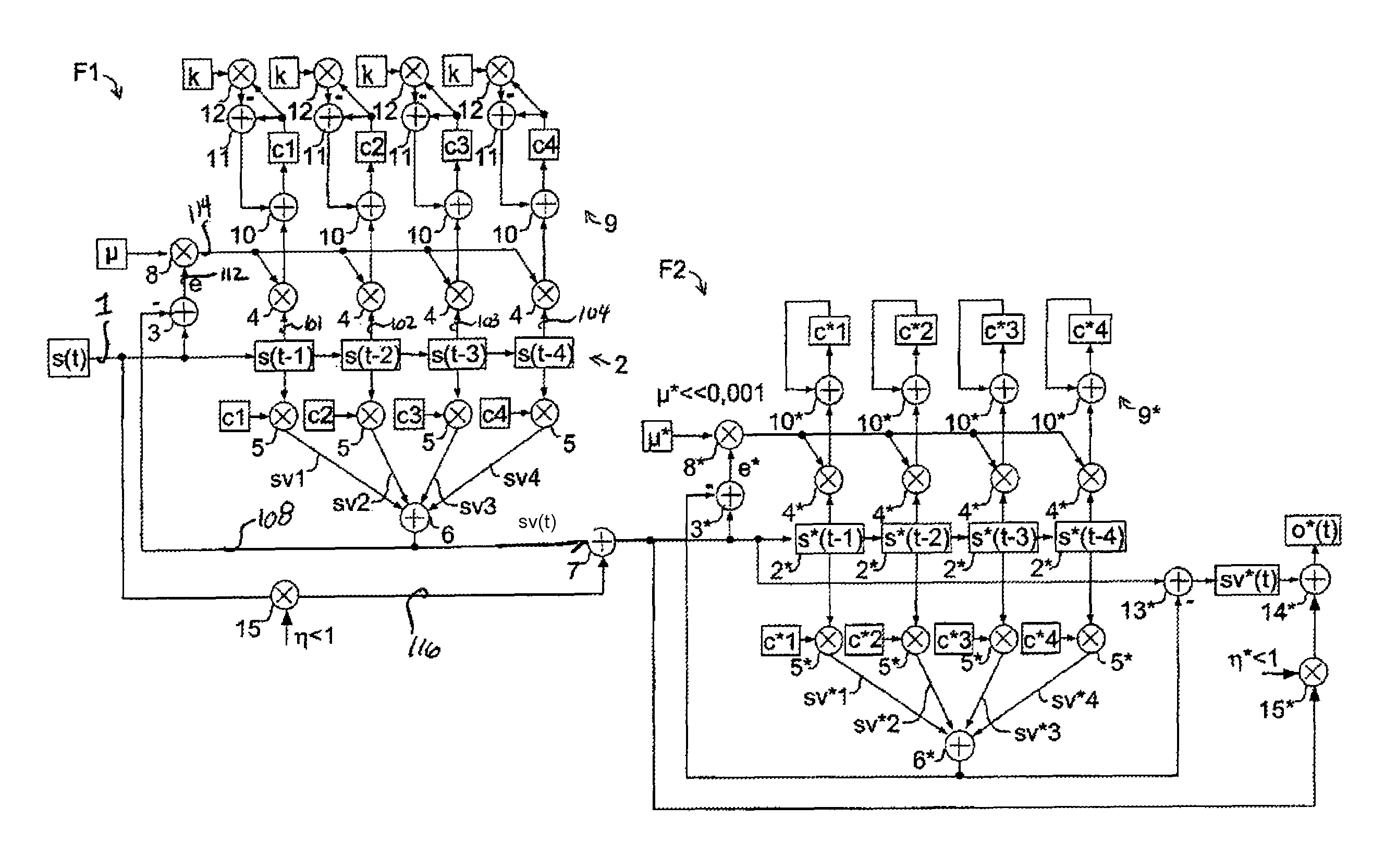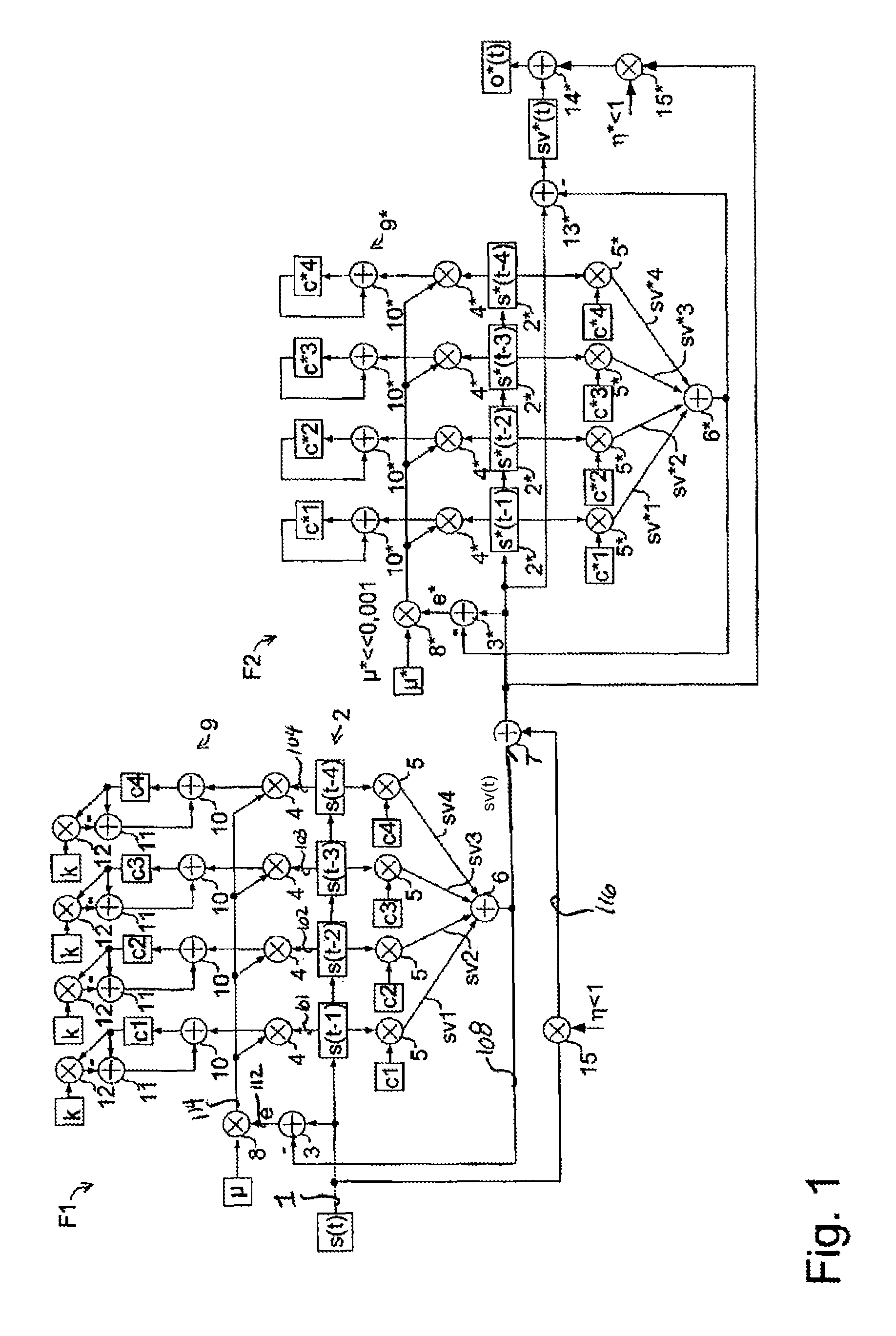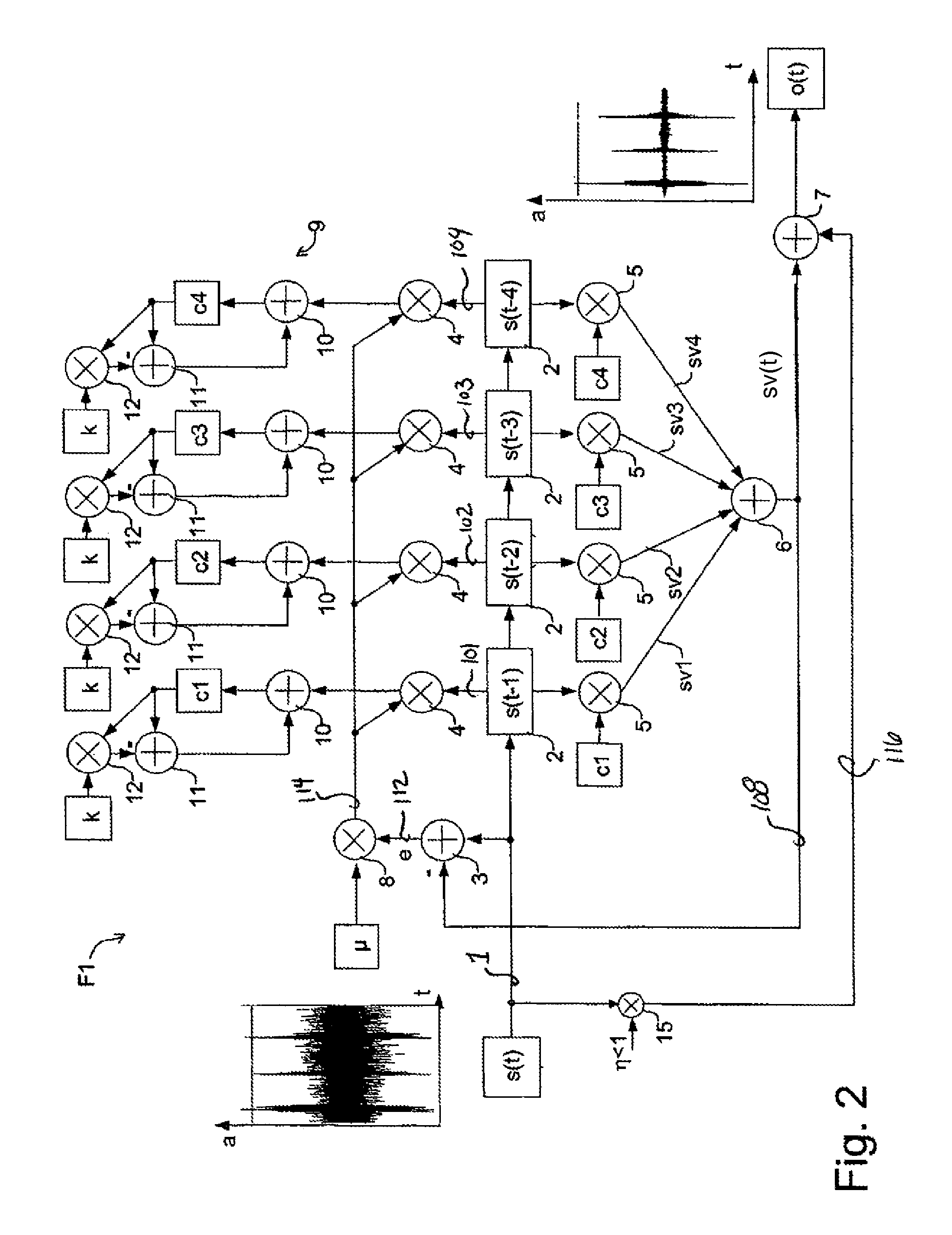Adaptive reduction of noise signals and background signals in a speech-processing system
a speech processing system and background signal technology, applied in the field of signal processing, can solve the problems of reducing the quality of speech processing, the computational cost of this technique is relatively high, and the memory requirement is also relatively high, so as to reduce the memory requirement, the effect of reducing the computational cost and reducing the memory requiremen
- Summary
- Abstract
- Description
- Claims
- Application Information
AI Technical Summary
Benefits of technology
Problems solved by technology
Method used
Image
Examples
Embodiment Construction
[0036]FIG. 1 illustrates two adaptive filters F1, F2 which are serially connected as a first filter stage and a second filter stage. The first filter stage may be used on a stand-alone basis.
[0037]The first filter F1 receives an audio input signal s(t) on a line 1, and the audio input signal is applied to a group of delay elements 2. Each of the delay elements may be configured for example, as a buffer which delays the given applied value of the audio input signal s(t) by a given clock cycle. In addition, the audio input signal s(t) on the line is fed to a first adder 3. The delayed values s(t−1)-s(t−4) on lines 101-104 respectively are applied to a corresponding one of a first multiplier 4 and a corresponding one of a second multiplier 5. One coefficient each c1-c4 of an adaptive filter is also applied to the group of second multipliers 5. The resultant products output from the group of second multipliers 5 are outputted as prediction errors sv1-sv4 to a second adder 6. A temporal ...
PUM
 Login to View More
Login to View More Abstract
Description
Claims
Application Information
 Login to View More
Login to View More - R&D
- Intellectual Property
- Life Sciences
- Materials
- Tech Scout
- Unparalleled Data Quality
- Higher Quality Content
- 60% Fewer Hallucinations
Browse by: Latest US Patents, China's latest patents, Technical Efficacy Thesaurus, Application Domain, Technology Topic, Popular Technical Reports.
© 2025 PatSnap. All rights reserved.Legal|Privacy policy|Modern Slavery Act Transparency Statement|Sitemap|About US| Contact US: help@patsnap.com



